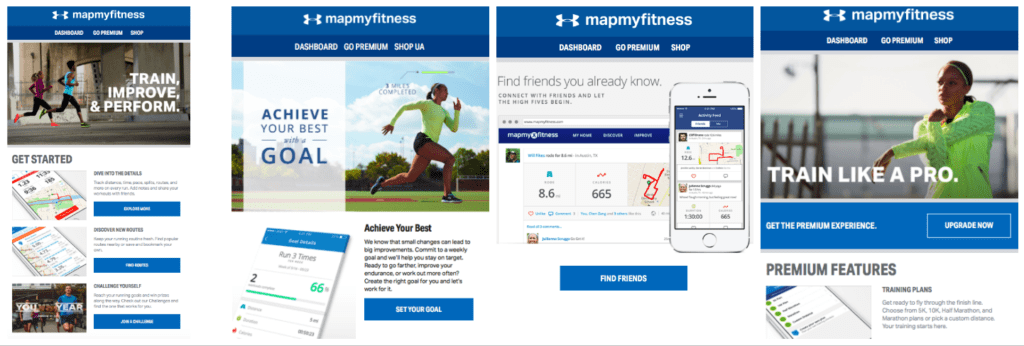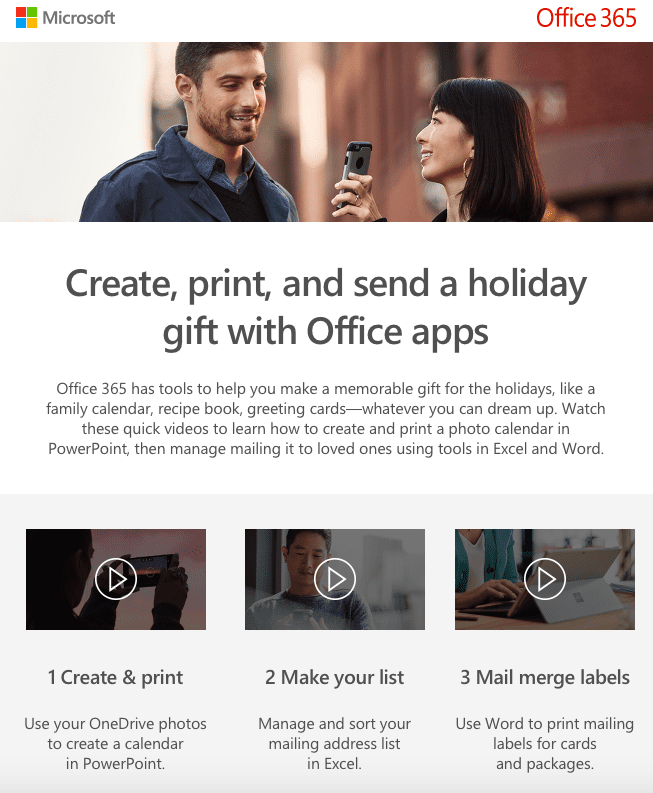If I’ve heard it once, I’ve heard it a thousand times: “That might work in B2C, but we’re B2B,” as if B2B marketers are from Mars and B2C from Venus.
Well, B2B marketers, I have good news: we’re all inhabiting the same planet, Earth, which is populated by (shocker!) human beings. And human beings—whether they’re receiving email in a business or a consumer context—tend to think and act in remarkably predictable ways. Which is why every time I hear that faulty “…but we’re B2B” premise, I take the opportunity to crush it.
After all, every marketing message sent is received by a person. Whether your company sells to other companies or directly to consumers, people are receiving your messages and making response or purchase decisions.
That said, I am not without compassion. I crush premises acutely aware of the differences between B2B and B2C. As a B2B marketer myself, I know the challenges we face that B2C marketers usually don’t, like smaller email list sizes, longer and more complex sales cycles, business models that don’t (or can’t) support e-commerce, and difficulty in reaching—let alone merely influencing—decision-makers.
Still, those are not excuses for shying away from email as a marketing channel. So stop dissing your B2C cousins, and instead, pull up a coffee and swipe a lesson (or seven) from them, then deploy and share in the secrets of their success.
1. Take It Seriously
It’s time for B2B marketers to take the channel as seriously as B2C marketers do. Consumer-facing retailers and e-commerce brands have mastered the use of email to directly drive sales revenue (and a lot of it).
Even though the path to sales may be more indirect for B2B marketers, email goes a long way toward progressing prospects through the sales funnel faster, empowering the customer journey, and strengthening confidence and loyalty.
“Taking it seriously” means committing to a consistent messaging plan, budget, integration with sales, human/agency resources, and strategy (see tips 2-4 below) while avoiding an on-again, off-again approach to use of the channel.
2. Think Dialogue, not Blast
The days of batch-and-blast are long gone. B2C email marketers learned this during the fledgling days of marketing automation with early “sense-and-respond” emails that were deployed to recognize high-value actions or prevent conversion attrition, like welcome, onboarding, repurchase and shopping cart abandonment campaigns.
Programs such as these are intentionally designed and sequenced to recognize the customer lifecycle and natural inflection points on the customer journey. They mirror a conversation vs. simple one-way communication. It’s time for B2B email to do so as well.
MapMyFitness does an excellent job facilitating a dialogue in its onboarding email campaign below. New users are first given resources to get started with the app, then they’re encouraged to set a fitness goal and find their friends. Once a relationship has been established, then the brand sells the benefits of its premium features.


B2B marketers should think of email as a dialogue with customers, as MapMyFitness does in its onboarding campaign.
3. Treat Your Data Like Gold
B2C email marketers have long treated their email lists as a high-value asset, but also know it isn’t limited to just the subscriber information they collect and campaign response data tracked.
When married with CDP (customer data platform) and e-commerce data, email subscriber data can be mined for all sorts of nuggets that make segmentation and customization a powerful reality.
Gone are the days of one-size-fits-all messaging now that we can identify subscriber segments based on behavior, then message them specifically and intentionally to reflect recognition of their actions and preferences, enticing them with highly relevant offers and timely calls to action.
Today’s more advanced systems mean data integration across multiple platforms is practically seamless and far from the painful tech exercise it once was.
4. Content Is King
Because of longer sales cycles often necessitating prospect nurturing to foster eventual conversion, content marketing plays a more important role in B2B than B2C.
Yet even with their often direct route from inbox to sales, B2C email marketers know that constant promotional messaging without breaks for education, entertainment and information lead to subscriber fatigue and eventual burnout—or worse yet, complaints.
So content-oriented messages designed more to sell by way of serving (than sell direct) become an integral part of the mix. B2B marketers are often content-rich and should leverage it in email, like Microsoft does with video content in its Office 365 holiday promotion below.
Content like customer success stories, white papers, webinars, worksheets, comparison grids, feature lists, and use cases make for excellent subscriber engagement and confidence builders.
Plus, interaction with content can be scored to identify hot vs. warm vs. cold leads and segment them for unique and appropriate triggered follow-up email.


Microsoft educates Office 365 customers with a video how-to series.
5. Personality Please!
I feel like once-upon-a-time B2B marketing became synonymous with “serious” while B2C marketing was allowed to be edgy, creative and fun. Nonsense! B2B email can be just as personality-driven as B2C, and is more memorable and welcomed when it is.
Take Iterable, for example. As you likely have already noticed, they have a distinct brand personality and often run engaging campaigns with a unique twist. To promote their omni-channel marketing conference, Activate, which takes place in San Francisco next week, the marketing team ran a Taco Tuesday deal.
Everyone who registered for the event with a special promo code received $100 worth of tacos for their company. The GIF they included below was the perfect way to put their personality on display.
If your brand or company has a unique personality—or is known for the personality of your founder (think Steve Jobs and Apple)—your email should be letting it shine. In fact, we need more B2B email with personality and style!


Iterable grabs attention for Activate with its Taco Tuesday promotion.
6. Less Tell, More Show
B2C email has gone through several design evolutions over the last two decades—from text-heavy to image-based, to image-laden to responsive. Today it’s a rare B2C email marketer who hasn’t employed advanced, modern creative techniques like animation, interactive content and video, making B2C email more engaging and visual than ever.
For instance, in the email depicted below, digital asset marketplace Envato uses a colorful GIF to promote its trending WordPress themes.
Time for B2B marketers to embrace advanced creative tactics too, realizing email works best when we show vs. tell. Remember the role of email is to get the click rather than regurgitate heavy web-hosted content into the inbox.
Too much B2B email is attempting to be a landing page instead of a message. B2B marketers are well-served by observing how their B2C cousins create curiosity, intrigue, and emotional connection through seeding, provoking and excerpting in email just enough to motivate subscribers to click.


Envato juices up its WordPress themes with a fun animated email.
7. Quantify the Value of Email
Finally, B2B marketers must close the loop by measuring the results of all our hard work. Even if channel attribution is more difficult in B2B vs. B2C, you still need to know what’s working and what isn’t to generate opens, clicks, completed CTAs and more on a campaign-to-campaign or month-over-month basis. But don’t stop there!
It may sound like alphabet soup, but metrics like RPE (Revenue Per Email Address), MQLs (Marketing Qualified Leads) and MQS (Marketing Qualified Sales) get you closer to quantifying the value of the channel.
RPE can be calculated in B2B just as in B2C by taking total revenue generated (over a month, quarter or year) by your email list divided by the number of subscribers to provide a measure of what each subscriber is worth.
You might not be able to do specific channel attribution, but you can track how much email subscribers spend vs. customers that are non-subscribers. And that speaks volumes about the incremental value email plays.
Redefine B2B Email Marketing
If you’re a B2B marketer, there’s no excuse for “B” to mean “blast,” “boring” or “broadcast.”
With a little ingenuity and a quick study of your B2C email marketing contemporaries, B2B email can be just as relevant, timely, tech-savvy and fun as consumer-oriented marketing.
Remember these lessons and challenge yourself the next time you’re tempted to say “…but we’re B2B.”
































